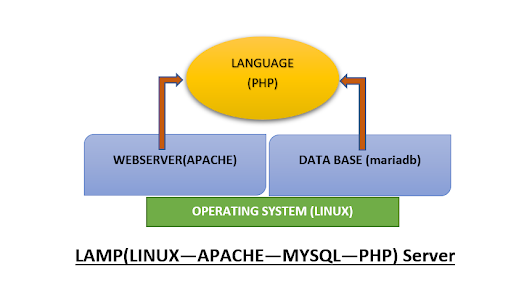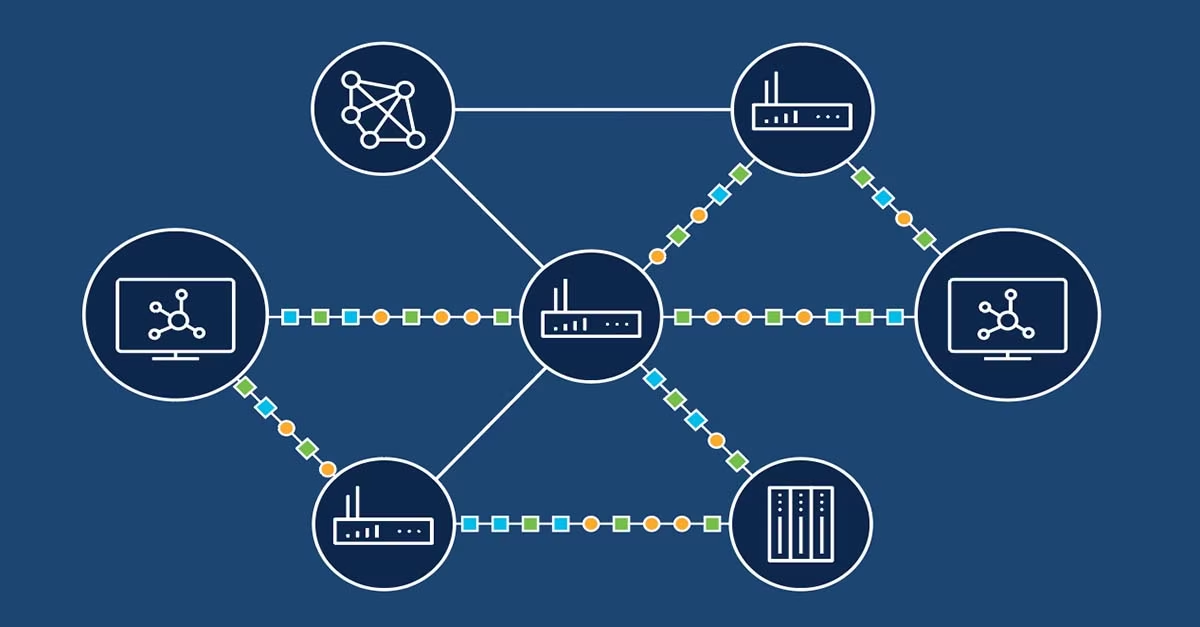LAMP SERVER installation through Repository Packages
The website you see or the blog you are reading right now is working on a web server and to write that website some coding language has been used, using a database to store the information. Thus, when these components work together to serve a web page or website to the user or visitor, they create a LAMP Server. These components together are called LAMP Stack.
By LAMP Stack here means is;
(L)inux as Operating System
(OS)
(A)pache as Web Server (WS)
(M)ySQL as a Database (DB)
(P)HP (Hypertext
preprocessor) as a programming language,
But for these OS, WS, DB, and programming languages, other options can also be considered. For in place of LINUX, one can use windows, then, it will be called WAMP, or In place of PHP, perl or python can be used or APACHE can be replaced by nginx or mariadb can be used in place of MySQL. All 4 components are used or opted for according to the requirements.
Why LAMP
server, when other forms of the server are present there?
LAMP is open
source, easily customizable, customer-support is available, and it is a mature stack, thus, mentioned all characteristics make the LAMP server more
accepting and easier to use.
The
open-source servers are MEAN, XAMPP, LLLMP, LEAP, and LAMP and the
non-open-source servers are WAMP, WIMP, and MAMP.
Requirements for making a web server for a web page are a VM based on the required OS.
1.) OS of choice, like for LAMP server LINUX is the required OS.
2.) Install APACHE: The Apache web server is a popular open-source web server that can be used along with PHP to host dynamic websites. It’s well-documented and has been in wide use for much of the history of the web.
sudo yum clean all
--To update the package
sudo yum update
--To install APACHE server service
sudo yum install httpd -y
--To enable Apache service
sudo systemctl enable httpd.service
--To start Apache
sudo systemctl start httpd.service
--To know the status of Apache service, it should be in running status
sudo systemctl status httpd
--To enable port 80 (http) on firewall for Apache
sudo firewall-cmd --permanent --zone=public --add-service=http
--To enable port 443(https) on firewall for APACHE (remember to install SSL module and call the same in the configuration file.
sudo firewall-cmd --permanent --zone=public --add-service=https
--Reload
Firewall service
sudo firewall-cmd --reload
--To know the version and status of the APACHE server
sudo rpm -qi httpd
--To know error logs, if face any
sudo /var/log/httpd/error_log
--To enable port 443 we need to have the specific module for https in conf.d
cd /etc/httpd/conf.d
1.1) How to give a name to your webserver
--Install Bind to give a name to your webserver
sudo yum install bind
--Edit conf file with this zone creation in the same file
cd /etc/named.conf
zone
"example.com" {
type master;
file
"/var/named/example.com.zone";
};
--In the zone file, do these entries
cd /var/named/example.com.zone
$TTL 86400
@ IN SOA
ns1.example.com. root.example.com. (
2017022801 ; serial
3600 ; refresh
1800 ; retry
604800 ; expire
86400 ; minimum
)
@ IN NS
ns1.example.com.
@ IN A
10.197.52,185
--Create zone name files in APACHE server config folder
cd
/etc/httpd/conf.d/example.com.conf
<VirtualHost *:80>
ServerName example.com
ServerAlias www.example.com
DocumentRoot /var/www/html
</VirtualHost>
--Restart the Apache service and check the same IP with the name this time instead of the IP
sudo
systemctl restart httpd
3). MariaDB
installation: maria DB function is to manage the database and this database can be vertical or horizontal scalable.
--To install mariadb
install mariadb-server mariadb -y
--To start mariadb
systemctl start mariadb
--To enable mariadb
systemctl enable mariadb
--To know status of mariadb
systemctl status mariadb
4). PHP Installation: To run or create any web page or to run
multiple pages or options over that web page, a language will be required and
for that PHP, Perl, or python language package needs to be installed.
--To update all the packages
sudo yum update
--To install php database
sudo yum install php php-mysql php-common php-gd php-mbstring php-mcrypt php-devel php-xml
--To restart service
sudo systemctl restart httpd
--To verify that PHP is installed and working, create a file as 'info.php' in the root directory as
/var/www/html/ with the following content
<?php
phpinfo();
?>
After creating check at the following URL "http://server-address/info.php".
If your PHP is working fine, you will see a page with the PHP information.
Bravo! your LAMP server is ready.


Comments
Post a Comment